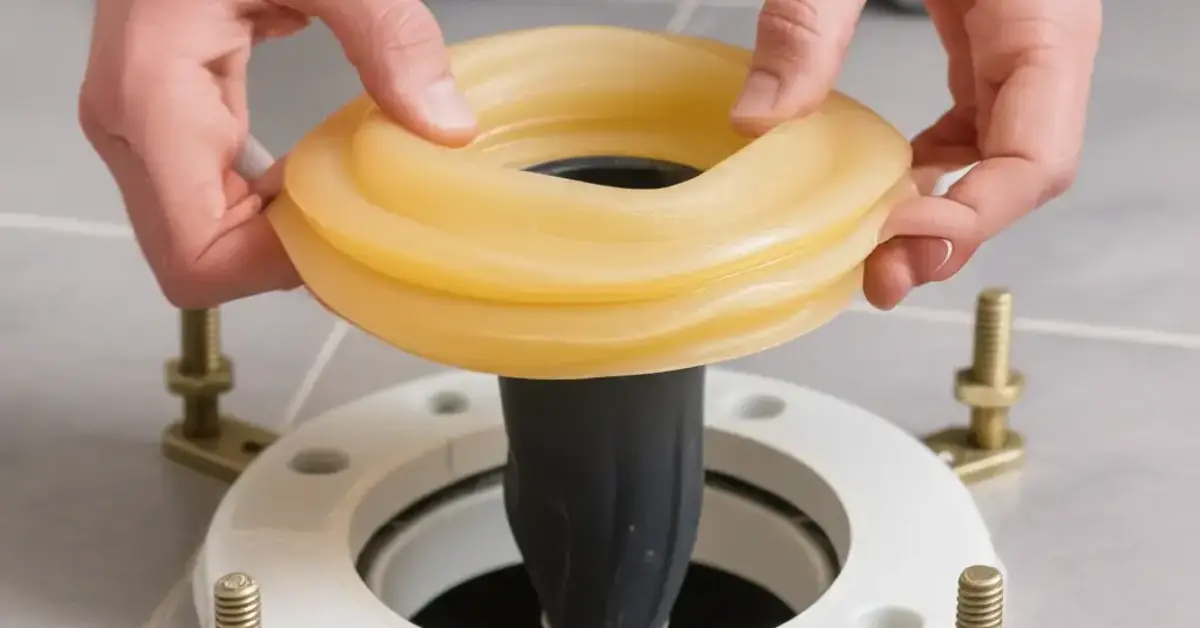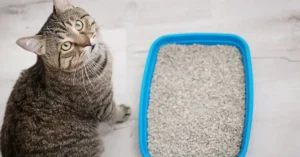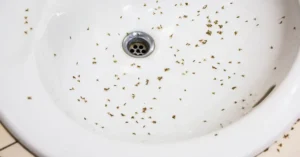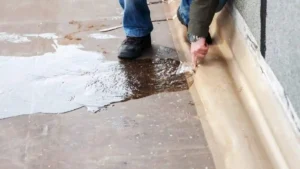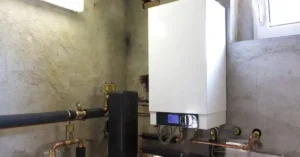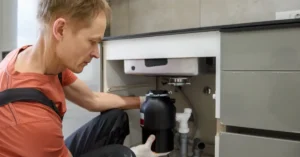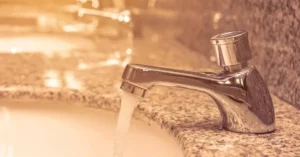A solid seal between your toilet and the drainpipe is vital for a healthy, odor-free bathroom. That is exactly what a toilet wax ring does. If you notice a leak at the base of your toilet or smell sewer gas, it is time for a replacement.
The good news is that learning how to install a toilet wax ring is a job any homeowner can handle. With the right preparation and steps, you can secure a watertight, long-lasting connection. This guide, based on professional experience, will walk you through the entire process simply and clearly.
What Is a Toilet Wax Ring?
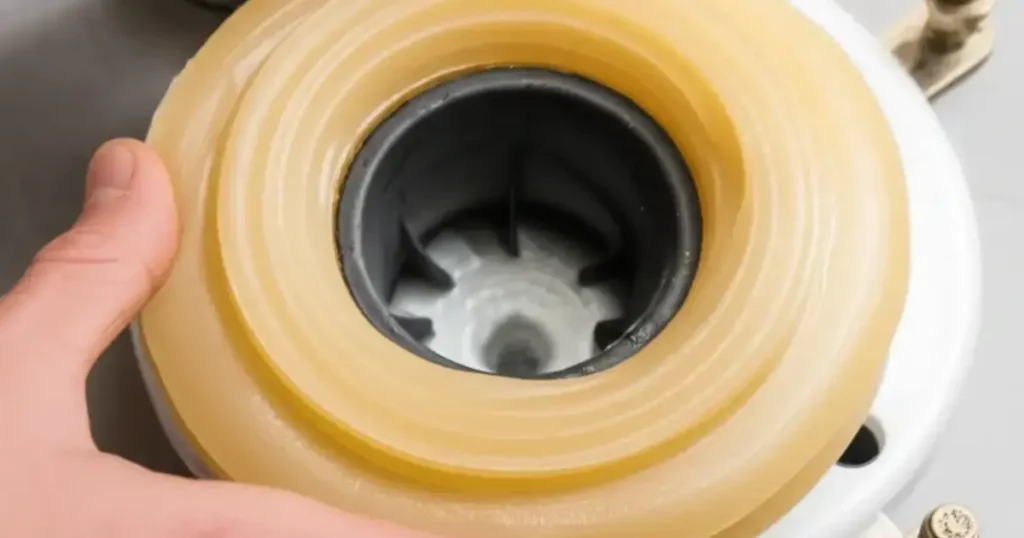
A toilet wax ring creates a watertight seal between your toilet base and the sewer drain opening. This ring sits on the toilet flange, which connects to your bathroom floor.The ring contains petroleum wax mixed with other materials. When you set the toilet down, your toilet’s weight compresses the wax. This pressure makes the wax spread and fill every gap. The seal stops sewer gases from entering your home. It also prevents water from leaking onto your bathroom floor.Most wax rings measure 3 to 4 inches in diameter. They come in two main types: regular and extra-thick.
Regular rings work for standard toilet installations. Extra-thick rings suit toilets that sit higher off the floor or flanges that sit below floor level.Some modern options use rubber or foam instead of wax. These alternative rings can be repositioned if you make a mistake during installation. Wax rings cannot be reused once compressed.
Signs You Need to Replace a Toilet Wax Ring
Knowing when to replace your toilet wax ring can help you prevent leaks, odors, and costly water damage. A damaged seal often shows warning signs long before major problems occur. Here’s what to watch for:
- Water pooling at the toilet base: If you notice water collecting around the bottom after flushing, the wax ring is likely cracked or deteriorated.
- Unpleasant sewer odors: A strong smell near your toilet means the wax seal has failed, allowing sewer gases to escape into your bathroom.
- Wobbly or unstable toilet: If your toilet rocks or shifts when you sit, the wax ring has probably compressed unevenly or the bolts have loosened.
- Ceiling stains or water spots: Discoloration on the ceiling below your bathroom is a clear sign of water leaking from a bad wax ring.
- Soft or spongy flooring: Press around the toilet base if the floor feels soft, long-term leakage has likely damaged the subfloor.
- Old or hardened wax ring: Over time, wax rings dry out and lose flexibility. If it’s been 20–30 years since installation, replacement is due.
Recognizing these signs of a bad toilet wax ring early can save you from expensive repairs and keep your bathroom clean, dry, and odor-free.
Tools and Materials You'll Need
Tools Required
- Adjustable wrench
- Putty knife or scraper
- Bucket and sponge
- Rubber gloves
- Shop vacuum (optional but helpful)
- Level
- Hacksaw (if bolts are rusted)
Materials Needed
- New wax ring (with or without plastic horn)
- Toilet flange bolts (also called closet bolts)
- Toilet shims (if needed)
- Penetrating oil (for rusty bolts)
- Towels or rags
- Plastic bags for disposal
- Caulk (optional for finishing)
Choose your wax ring carefully. A standard ring works for most installations. Pick an extra-thick ring if your flange sits more than 1/4 inch below floor level. Rings with plastic horns provide extra guidance for the toilet outlet.
Buy new flange bolts even if your old ones look fine. These bolts cost little and fresh hardware ensures a secure installation.
Step-by-Step Guide: How to Install a Toilet Wax Ring
Step 1: Turn Off the Water Supply
Locate the shut-off valve behind your toilet near the floor. Turn the valve clockwise until it stops. Flush the toilet to drain the tank. Hold the handle down to remove as much water as possible.
Use a sponge to soak up remaining water from the tank. Remove water from the bowl using a small cup or wet vacuum. Place towels around the base to catch any spills.
Step 2: Disconnect the Water Supply Line
Place your bucket under the supply line connection. Use an adjustable wrench to loosen the coupling nut where the line connects to the toilet tank. Water will drip out as you disconnect. Let it drain into your bucket.If the connection feels stuck, apply penetrating oil and wait 10 minutes. Rusty or corroded connections might need more force. Be gentle to avoid breaking the line.
Step 3: Remove the Toilet Mounting Bolts
Find the caps covering the bolts at the toilet base. Pry these caps off with a putty knife. Use your wrench to remove the nuts from both bolts. Turn counterclockwise.Stuck nuts happen often in older installations. Spray penetrating oil on the threads. Wait 15 minutes and try again. If nuts won’t budge, use a hacksaw to cut through the bolt shaft. Cut carefully to avoid damaging the flange.
Step 4: Lift and Remove the Toilet
Rock the toilet gently side to side to break the wax seal. Lift straight up using both hands. Toilets weigh 60 to 100 pounds. Get help if you need it.Carry the toilet to a nearby area. Lay it on its side on towels or cardboard. Some water will spill from the trap, so keep towels handy.
Step 5: Clean the Toilet Flange
Scrape away all old wax from the flange using your putty knife. Remove every bit of old material. The flange must be completely clean for the new ring to seal properly.Check the flange for cracks or damage. The flange should sit level with or slightly above your floor. Broken flanges need repair before you proceed. Repair kits are available at hardware stores.Clean the horn on the bottom of the toilet too. Remove all old wax residue. Wipe the area with a damp cloth and let it dry.
Step 6: Install New Flange Bolts
Insert new closet bolts into the flange slots. Position them evenly on opposite sides. The bolts should stand straight up. Some flanges have built-in bolt slots at specific positions.Check that bolts align properly. They should be equidistant from the center drain opening. This ensures your toilet sits straight when reinstalled.
Step 7: Position the New Wax Ring
Place your new wax ring directly on the flange. Center it over the drain opening. The tapered side faces up toward where the toilet will sit.If using a wax ring with a plastic horn, the horn points up into the toilet outlet. The horn helps guide waste into the drain pipe.Some people prefer placing the ring on the toilet outlet instead of the flange. Both methods work. Installing wax ring on toilet gives you more control during positioning. Placing it on the flange means less chance of knocking it loose.
Temperature matters when installing wax ring toilet. Cold wax is stiff and doesn’t compress well. Warm the ring slightly by leaving it in a warm room for an hour before installation. Don’t heat it directly or it will melt.
Step 8: Set the Toilet in Place
Lift the toilet and position it over the flange. Align the bolt holes in the toilet base with the flange bolts. Lower the toilet straight down. Don’t twist or shift position once it touches the wax.Press down firmly on the toilet bowl. Put your weight on it. This compresses the wax ring and creates the seal. Press evenly around the toilet base.Rock the toilet gently to help the wax spread. Don’t lift it back up. Once the toilet compresses the wax, the seal is set. Lifting breaks the seal and you’ll need a new ring.
Step 9: Secure the Toilet
Thread washers and nuts onto the flange bolts. Tighten them gradually using your wrench. Alternate between bolts, tightening each a little at a time. This keeps the toilet level.Don’t overtighten. Excessive force can crack the toilet base. Tighten until the toilet feels snug and doesn’t rock. Check with a level. The toilet should sit flat.If the toilet rocks after tightening, use plastic shims. Slide shims under the low points. Trim excess shim material with a utility knife. Never force a rocking toilet flat by overtightening bolts.
Step 10: Reconnect the Water Supply
Attach the supply line to the toilet tank. Hand-tighten first, then snug with your wrench. Don’t force it too tight or you’ll strip the threads.Turn the shut-off valve counterclockwise to restore water. Watch for leaks at the connection. If water drips, tighten slightly more.Let the tank fill completely. Flush several times and check around the toilet base for water. Dry the floor first so you can spot new leaks easily.
Step 11: Final Checks and Finishing Touches
Snap the decorative caps over the flange bolts. If bolts extend too high above the nuts, cut them with a hacksaw. Leave about 1/4 inch above the nut.Check the toilet’s stability one more time. Sit on it. Lean to different sides. The toilet should feel rock solid.Wait 24 hours before caulking around the base. This lets the wax ring fully set. Apply a thin bead of bathroom caulk around the toilet base if desired. Leave a small gap at the back. This gap lets water escape if a leak develops, alerting you to problems.
Common Mistakes to Avoid
Using the Wrong Size Ring
Measure your flange height before buying a wax ring. Standard rings fail when flanges sit too low. Extra-thick rings work better for below-floor flanges. Using a ring that’s too small causes immediate leaks.
Reusing Old Wax Rings
Never attempt wax ring install with a used ring. Once compressed, wax rings cannot create a proper seal again. Always use a fresh ring even if you’re just repositioning your toilet.
Not Cleaning the Flange Properly
Leftover wax prevents the new ring from sealing correctly. Spend extra time scraping and cleaning. A dirty flange guarantees future leaks.
Lifting the Toilet After Setting It
People make this mistake trying to check if the ring sealed properly. Once you set the toilet down on the wax, the seal forms. Lifting it breaks the seal completely. You’ll need to start over with a new ring.
Overtightening Flange Bolts
Porcelain cracks easily under excessive pressure. Tighten bolts until snug. The toilet should be stable but not squeezed. Cracks in the base mean expensive toilet replacement.
Forgetting to Check Flange Condition
A cracked or corroded flange won’t hold bolts properly. The toilet will rock no matter how well you install wax ring on toilet. Inspect flanges carefully. Replace damaged ones before installing the new ring.
Skipping the Level Check
An unlevel toilet stresses the wax ring unevenly. This causes premature seal failure. Use a level during installation. Shim as needed to achieve a flat surface.
When to Call a Professional
Some toilet wax ring installation jobs are best to left for experts. If you’re dealing with broken or damaged flanges, severe corrosion, or persistent leaks even after replacing the wax ring, it’s time to call a plumber. Flange repairs often require cutting into the floor and using specialized tools, which can be risky without proper experience.Older toilets with non-standard drains may also need professional adjustments to ensure a perfect fit. If at any point you feel unsure, stop and seek help improper installation can cause costly water damage compared to hiring a professional from the start.
You can read about: How to Install a Toilet
Professional Toilet Installation and Repair in Los Angeles
When it comes to dependable Toilet Installation Eagle Rock services, homeowners throughout Los Angeles turn to Derks Plumbing for expert solutions. Our licensed and experienced plumbers handle everything from quick wax ring replacements to complete toilet installations with precision and care.We proudly serve neighborhoods across Los Angeles County including Eagle Rock, Glendale, Silver Lake, Pasadena, and surrounding areas providing top-quality workmanship and lasting results.
Whether you’re upgrading your bathroom or fixing a leak, our team ensures every job is done efficiently, cleanly, and to the highest standard.For reliable toilet installation and repair in Los Angeles, contact our experts today and experience service that keeps your home comfortable, clean, and leak-free.
Conclusion
Understanding how to install a toilet wax ring empowers homeowners to take control of an essential bathroom repair with confidence. While the process may seem simple, it requires patience, precision, and attention to detail to achieve a lasting, watertight seal. Proper cleaning of the flange, correct placement of the wax ring, and careful alignment of the toilet are all crucial steps that prevent leaks and sewer odors.
By following the right technique, you can save money on professional services and gain valuable DIY experience. However, if you notice persistent leaks, water damage, or instability, don’t hesitate to contact a professional plumber for help. With proper installation, your toilet will remain secure, leak-free, and reliable for many years.
FAQs
How long does it take to install a wax ring on a toilet?
Most people complete the job in 60 to 90 minutes. First-timers might need up to 2 hours. The actual wax ring install takes only minutes. Most time goes to removing and reinstalling the toilet properly.
Can I install a wax ring without removing the toilet?
No. You must remove the toilet to access the flange and install the wax ring correctly. There’s no way to install wax toilet ring while the toilet is in place. Any product claiming this is unreliable.
How do I know which size wax ring to buy?
Measure from the top of your flange to your floor surface. If the flange sits flush or above the floor, use a standard ring. If it sits more than 1/4 inch below floor level, choose an extra-thick ring. When in doubt, extra-thick provides better coverage.
Should I use a wax ring with or without a horn?
Rings with plastic horns offer better guidance for the toilet outlet into the drain. They reduce the chance of missing the drain opening. Standard rings without horns work fine if you’re careful during installation. Both seal equally well when installed correctly.
How often should toilet wax rings be replaced?
Wax rings typically last 20 to 30 years. Replace them sooner if you notice leaks, odors, or floor damage. Any time you remove a toilet for repairs, install a fresh wax ring before reinstalling it.

